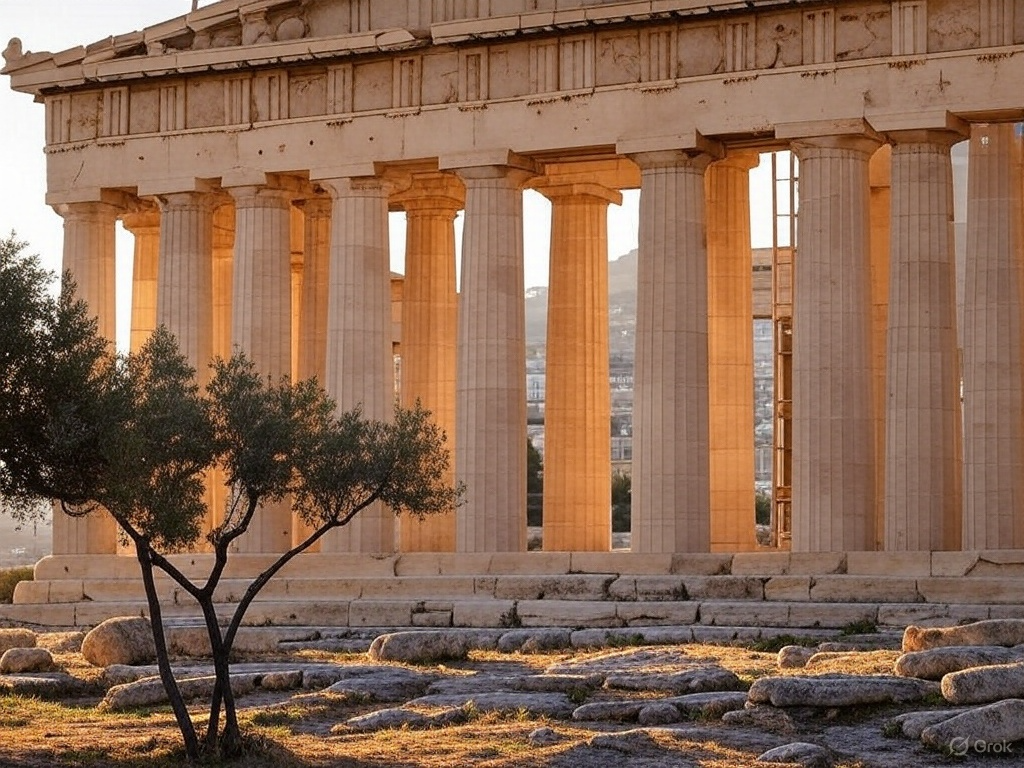A national marine park protects wildlife and now offers tours of “the Parthenon of shipwrecks” off the island of Alonissos. At Greece’s new underwater museum, scheduled to open officially in June 2021, divers will be able to explore an ancient shipwreck and its bounty of wine jars in the Aegean Sea.
“Greece, always in season” declared the sun-soaked nation’s tourist campaign last January. It was a marketing slogan backed by truth; in 2019 some 34 million visitors were drawn here. But then the COVID-19 pandemic arrived and decimated the tourism industry.
Yet there’s a glimmer amid the gloom: the designation of Greece’s first underwater museum. The unusual site, which preserves an ancient shipwreck, aims to lure future visitors; it could become a model for how to make tourism more sustainable in the post-pandemic era.
Located in the National Marine Park of Alonissos and Northern Sporades, in the Aegean Sea, the museum is part of the largest marine protected area in Europe. Because of looting concerns, the undersea antiquities were previously accessible only to archaeologists and those with special permission. Now recreational divers can plunge into the waters and, at a depth of about 80 feet, encounter the so-called Peristera, named after the neighboring uninhabited islet. As the wreck dates back to about 425 B.C., diving to it is like traveling in a time machine.
Layers of discovery
In 1985 a local fisherman, Dimitris Mavrikis, found the wreck off the west coast of Peristera. Seven years later, underwater excavations led by archaeologist Elpida Hatzidaki uncovered more detail. The ship was one of the biggest merchant vessels of the classical period (fifth through fourth centuries B.C.) and carried an impressive cargo: 4,000 wine amphorae (large two-handled jars) originating from the ancient Greek cities of Mende and Peparethus, plus black-glazed bowls, cups, plates, and tableware—essential items for the lavish banquets, or symposia, of the time.
A diver passes an underwater wall fringed with colorful corals off Alonissos, an island near the shipwreck. PHOTOGRAPH BY TIMO DERSCH
The demise of the ship, likely Athenian, came at the end of the Peloponnesian War–those turbulent decades when two superpowers, Athens and Sparta, battled each other. Archaeologists recovered only some burnt wooden parts of the ship’s hull, but the piled amphorae led to a major discovery.
“Large vessels as this [39 by 82 feet] were considered to be first built in Roman times. Peristera shipwreck, though, documents their presence already in the last quarter of the fifth century B.C.,” says Pari Kalamara, director of Greece’s Ephorate of Underwater Antiquities.
The shipwreck is also one of the best preserved. “The amphorae cargo has maintained its consistency and remains in place, in layers, such as was loaded in the hold, indicating the vessel’s shape,” says Kalamara. “This is a significantly unique experience for the divers-visitors who visualize a classical-era vessel.”
Twenty years after the last excavation, the site dubbed “the Parthenon of shipwrecks” still holds some secrets: how ancient trade was developed, how the ship was constructed, and why it sank. And perhaps the most evocative question of all: what lies beneath the amphorae?
Opening to the public
With the recent designation as an underwater museum, recreational divers accompanied by certified instructors began visiting the shipwreck during a pilot phase from August to October 2020.
Alonissos, known for its lush landscapes and laid-back vibe, is a jumping-off point for visiting the underwater museum. PHOTOGRAPH BY GEORGIOS TSICHLIS, ALAMY STOCK PHOTO
“There has been huge interest from all over the world. This is the first time that so many experienced divers arrived,” says Kostas Efstathiou of Alonissos Triton Dive Center, one of the accredited local tour operators. For advanced divers, there were four visits each day, and those with no dive experience could take lessons in order to visit. “I believe in the coming years Alonissos will take her place on the global diving map,” Efstathiou says.
As divers descend, the sunlight dims and the colors fade. But flashlights bring back the hues, and visitors glimpse the oranges, greens, and reds of the corals, schooling fish, and sponges—and the moray eels poking their heads out of amphorae. At a depth of about 50 feet, divers get a panoramic view of the ancient wreck turned modern-day ecosystem. “This is awe-inspiring,” says Efstathiou. “What you see … is 2,500 years old, a time travel.”
Wreck enthusiasts don’t have to dive to get a peek into this undersea realm. From the site, five underwater cameras stream real-time video, and one is open to the public (the others are currently reserved for scientists). “This is a world innovation using state-of-the-art technologies,” says George Papalambrou, a professor in the School of Naval Architecture and Marine Engineering at the National Technical University of Athens and a member of the project team. “While watching the video … people from all over the world, divers or non-divers, [can] share the diving experience.”
Also, on Alonissos island, at the Information and Awareness Centre in the hillside village of Chora, non-divers will be able to use special glasses to take a 3D virtual-reality tour of the shipwreck.
Even with coronavirus travel restrictions in place, the museum’s pilot phase drew 66 scheduled underwater visits and 246 visitors-divers, an optimistic kickoff to the official opening, scheduled for June 2021.
Protecting culture—and nature
Antiquities are not the only treasures safeguarded in the region. Efforts to protect rare or endangered terrestrial and marine species started in the 1970s. By 1992 an area of nearly one thousand square miles—including Alonissos, six smaller islands, and 22 islets—was declared the first national marine park in Greece.
A Mediterranean monk seal lounges on an Alonissos beach, part of a national marine park that protects the critically endangered seals and hundreds of other species. PHOTOGRAPH BY TIMO DERSCH
Today more than 50 endangered Mediterranean monk seals find refuge at the nature reserve of Gioura and the protected area of Piperi; Eleonora’s falcons at the islets of Skantzoura, Strogilo, and Polemica; and rare plants like the sea daffodil in Psathoura. The park also shelters a rare wild goat breed, 300 fish species, and more than 80 bird species, as well as reptiles, dolphins, whales, terrestrial flora, and the seagrass Posidonia oceanica, known as Neptune grass.
“Our visitors are lovers of the sea, nature, sailing. Here you become one with nature, as you are part of an untouched environment,” says Yiannis Nikolopoulos, special associate to the mayor of Alonissos. “This is a truly green island, covered by rich vegetation, being the first Greek island that banned the plastic bag [in] 2015. Her face is thankfully not altered by tourism.”
Last summer, the pandemic caused tourism to plummet by 85 percent compared to the previous year, says Aggeliki Malamateniou, president of the Alonissos Hotel Owners Association. “Our visitors, though, are loyal,” she says. “They do appreciate what Alonissos offers.”
What it offers—with the marine park and museum—is distinctive. For it to be sustainable, the island’s treasures need to be preserved for the long run. “All of us in the area and the diving centers have a large share of responsibility,” says Efstathiou. If diving tourism can be developed in a way that continues to protect the antiquities and the environment, it “can offer unique experiences to visitors, further cultivate their interest in the underwater heritage, and provide new revenue to the local community,” says Kalamara.
In 2019 four more shipwrecks in the region were designated as accessible underwater archaeological sites, with the intention to make them future museums. This could signal a new trend in a country with almost 10,000 miles of coastline and hundreds of shipwrecks.
“The biggest challenge [for the first museum] was the design to be holistic and long-term functional, so that it could serve as a paradigm for similar initiatives elsewhere,” says Kalamara, “And I think we have succeeded.”
Source: nationalgeographic













